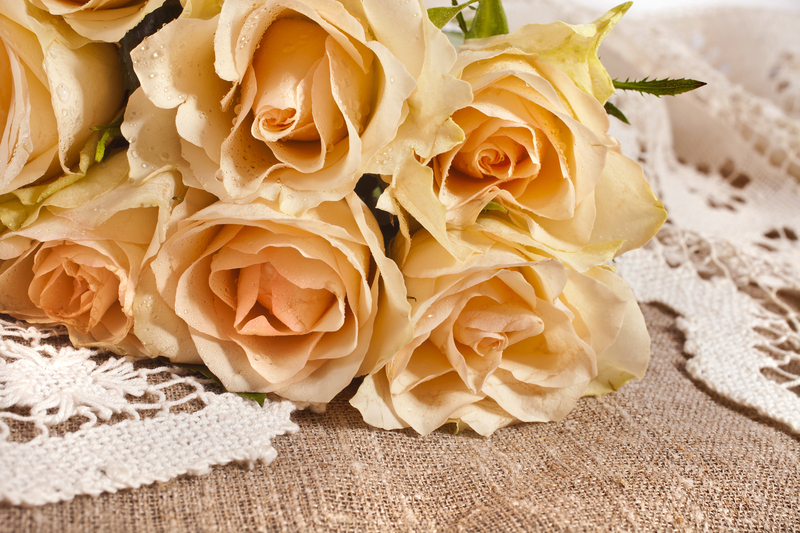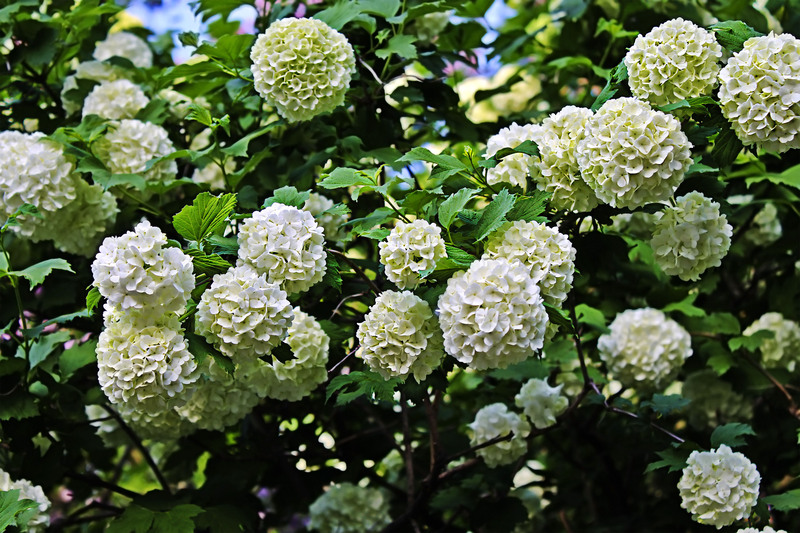Understanding the Basics of Container Gardening
Posted on 26/06/2025
Understanding the Basics of Container Gardening: A Comprehensive Guide
Container gardening has become the go-to solution for urban dwellers, small-space enthusiasts, and anyone looking to maximize their planting experience. This innovative method allows for growing a variety of plants--flowers, herbs, vegetables, and even small trees--right on patios, balconies, windowsills, and other small spaces. If you're curious about starting your own container garden or just want to refine your existing skills, this guide will serve as a valuable resource. Here, we thoroughly explore the essentials of container gardening to help you create a thriving mini-garden, anywhere!
What is Container Gardening?
Simply put, container gardening is the practice of growing plants in containers, such as pots, planters, tubs, or boxes, rather than planting them directly in the ground. This gardening method is ideal for people with limited space, poor soil quality, or those who wish to beautify their decks, rooftops, and balconies.
Why Choose Container Gardening?
- Space Efficiency: Perfect for apartments, patios, or small outdoor areas.
- Soil Control: You control the soil quality, pH, and nutrients provided to your plants.
- Pest and Disease Management: Easier to monitor and manage pests and diseases in a small, contained area.
- Accessibility: Great for gardeners with limited mobility, as containers can be table-height or placed on benches.
- Design Flexibility: Move containers to change garden layouts or maximize sun exposure.

Essential Elements of Container Gardening
Before diving into container planting basics, it's necessary to understand the critical components that ensure your garden thrives.
Choosing the Right Containers
- Material Matters: Clay, ceramic, plastic, fiberglass, wooden, and metal pots each have their pros and cons regarding durability, weight, and moisture retention.
- Size Considerations: Make sure the container is large enough for the root system of your chosen plant. Generally, bigger is better to prevent overcrowding and frequent watering.
- Drainage is Key: Ensure your containers have drainage holes to prevent waterlogged roots, which can lead to rot.
Quality Potting Soil
The success of any container garden hinges on the type of soil used. Unlike typical garden soil, potting mixes are specifically designed for container gardening:
- Lightweight and Well-Draining: A good mix provides aeration and holds moisture without becoming soggy.
- Nutrient Rich: Look for mixes containing compost, perlite, vermiculite, and peat moss.
- pH Balanced: Depending on your plant choices, you may need to adjust the soil's acidity.
Tip: Avoid using native garden soil, as it can compact in containers and hinder drainage and root growth.
Sunlight Requirements
Sun exposure is a fundamental aspect of successful container gardening. Most vegetables and flowering plants need at least 6 hours of sun per day. However, some shade-loving plants--like ferns or impatiens--thrive with less.
- Track the Sun in your intended gardening spot to ensure optimal placement.
- Move Containers as Needed to chase the light during different seasons or times of day.
Watering Your Plants
Since containers dry out faster than garden soil, consistent watering is essential. However, overwatering can be as harmful as underwatering.
- Check Soil Moisture: Stick your finger an inch below the surface to test for dryness before watering.
- Water Deeply: Ensure water penetrates the entire root zone, not just the surface.
- Consider Drip Irrigation or Self-Watering Containers: Both are excellent for maintaining steady moisture levels.
Fertilizing Container Gardens
Nutrients leach from containers more quickly than from garden beds, making regular fertilization crucial. Use slow-release granules or supplement with a liquid fertilizer every few weeks during the growing season.
Planning Your Container Garden
Selecting Plants
What grows best in containers? You'll be surprised by the diversity: from annuals and perennials to edible gardening favorites. Make sure to:
- Match Growth Habits: Combine plants that share similar water, light, and nutrient needs.
- Consider Heights and Spreads: Use the "thriller, filler, spiller" formula: a tall, eye-catching plant as the focal point, mid-sized filler plants, and trailing plants to soften the edge.
- Herbs and Vegetables: Lettuce, spinach, tomatoes, peppers, basil, mint, and strawberries thrive in pots and boxes.
- Flowers and Ornamentals: Petunias, marigolds, geraniums, begonias, and pansies are popular choices.
Designing Your Space
Creativity is a big part of container gardening. Experiment with:
- Color Schemes: Coordinate flower and foliage colors to make striking displays.
- Varying Heights: Arrange tall containers at the back or center, with smaller pots in front.
- Repurposed Items: Vintage buckets, barrels, shoes, and even bathtubs can become unique planters.
- Vertical Gardening: Maximize space by installing wall planters or stacked container towers.
Remember: The only limit is your imagination!
Starting Your Container Garden: Step-by-Step
Step 1: Select Your Containers
- Pick shapes and sizes according to your space and plant needs.
- Check for adequate drainage holes or drill your own.
Step 2: Prepare the Soil Mix
- Purchase a high-quality potting mix or blend your own with compost, perlite, and peat moss.
- Add slow-release fertilizer granules if your mix doesn't contain nutrients.
Step 3: Arrange Your Plants
- Arrange plants while still in nursery pots to test design and spacing.
- Fill containers about two-thirds with potting mix.
- Gently loosen root balls and set plants in place; fill soil around them and press gently.
- Leave at least 1 inch between the soil surface and the pot rim for easier watering.
Step 4: Water Thoroughly
- Water in your new plants until water runs from the drainage holes.
- Check moisture daily, especially during hot or windy weather.
Step 5: Place and Maintain
- Locate containers in ideal sun/shade areas as per plant requirements.
- Monitor for pests, diseases, and remove dead leaves and flowers to encourage new growth.
- Feed with liquid fertilizer every 2-4 weeks, depending on plant needs.
Common Challenges in Container Gardening (and How to Overcome Them)
- Drying Out: Use mulch, water-retaining crystals, or self-watering pots to maintain consistent soil moisture.
- Wilting or Yellowing: Can indicate overwatering or underwatering. Check drainage and watering habits.
- Pests and Diseases: Inspect regularly. Remove affected parts and use organic solutions for minor infestations.
- Limited Growth: Ensure the container is big enough and refresh the soil annually for best results.
Pro Tip: Rotate Your Plants
Rotate containers periodically to promote even growth, especially for sun-loving species. This avoids "leaning" towards the light source and encourages symmetrical development.
The Benefits of Container Gardening
- Accessibility: Provides gardening opportunities for people with limited space or mobility.
- Year-Round Color and Food: With careful selection, enjoy fresh herbs, vegetables, and blooms all year--indoors or outdoors.
- Portability: Easily relocate containers to protect from extreme weather or pests.
- Control: Fine-tune soil, fertilizer, and watering routines for individual plant health.
- Aesthetic Appeal: Instantly enhances patios, balconies, and entranceways with vibrant life and beauty.
Creative Container Gardening Ideas
- Vertical Pallet Gardens: Reuse wooden pallets for a vertical array of herbs and flowers.
- Succulent Arrangements: Use shallow dishes or wall planters for drought-tolerant displays.
- Fairy Gardens: Miniature landscapes with small-scale accessories--fun for all ages!
- Sensory Gardens: Pair fragrant, textured, and visually striking plants for an engaging experience.

FAQs About Container Gardening
- Can I use any pot for container gardening?
While most containers can be repurposed, ensure they have drainage and are large enough for your plant's root structure. - How often should I water my container garden?
This depends on weather, plant species, and container size. Typically, daily watering is needed in hot weather, less often in cooler months. - Do all container plants need fertilizer?
Yes. Because nutrients wash out quickly, regular feeding is important for healthy growth. - Can I garden indoors with containers?
Absolutely! Container gardening indoors is perfect for growing herbs, succulents, and even dwarf vegetables.
Conclusion: Embrace the Joy of Container Gardening
Container gardening is an accessible, creative, and rewarding way to cultivate plants regardless of experience or space. With the right containers, soil, plants, and care, you can transform any area--indoors or out--into a flourishing oasis. By understanding the fundamentals of container gardening, you set the stage for gardening success and boundless beauty year-round. Start small, experiment boldly, and enjoy the miniature world you create right at home!
Ready to Begin?
Explore local garden centers, collect unique containers, and let your imagination run wild. Whether you dream of homegrown herbs, cheerful flowers, or a leafy escape, container gardening basics will help you cultivate it all--one pot at a time!

